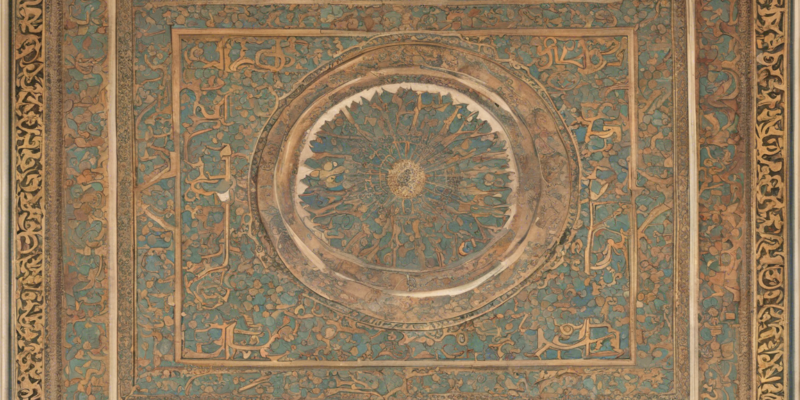The Bayaz E Gham, also known as the “Depth of Sorrow” or “Ocean of Sadness” is a poetic form that originates from Persian literature. It is a unique and intricate style of poetry that delves deep into themes of sorrow, melancholy, and emotional turbulence. In this article, we will explore the Bayaz E Gham in detail, examining its structure, themes, and significance in Persian literature.
Origins and History of Bayaz E Gham
The Bayaz E Gham has its roots in the rich tradition of Persian poetry, which dates back centuries. It is believed to have emerged during the medieval period, becoming a popular form among Persian poets who sought to express profound emotions and experiences through their verses. Influenced by Sufi mysticism and Persian cultural norms, the Bayaz E Gham evolved as a distinct form of expression that captivated audiences with its poignant and emotive verses.
Structure and Characteristics of Bayaz E Gham
The Bayaz E Gham is characterized by its intricate structure and use of symbolism to convey deep emotions. Typically written in a series of couplets, each containing a self-contained thought or idea, this form of poetry often employs metaphors, allegories, and allusions to evoke a sense of sorrow and longing in the reader. The language used in Bayaz E Gham is often lyrical and melodious, drawing readers into a world of heightened emotions and introspection.
Themes and Motifs in Bayaz E Gham
One of the central themes of Bayaz E Gham is the exploration of sorrow and melancholy. Poets who write in this style often delve into the depths of human emotion, reflecting on themes such as loss, heartbreak, longing, and existential angst. Through the use of vivid imagery and evocative language, Bayaz E Gham poets are able to create a profound sense of emotional resonance in their work, inviting readers to contemplate the complexities of the human experience.
Significance of Bayaz E Gham in Persian Literature
The Bayaz E Gham holds a significant place in the canon of Persian literature, revered for its ability to capture the depths of human emotion with grace and beauty. Many renowned Persian poets, such as Rumi, Hafez, and Saadi, have contributed to the tradition of Bayaz E Gham, infusing their verses with a timeless quality that continues to resonate with readers to this day. As a form of poetry that celebrates the complexities of the human soul, the Bayaz E Gham remains a potent and enduring art form in Persian literary tradition.
Tips for Writing Bayaz E Gham Poetry
- Embrace Emotion: Allow yourself to tap into your innermost emotions and express them freely through your verses.
- Use Symbolism: Incorporate symbols and metaphors to add depth and complexity to your poetry.
- Focus on Imagery: Paint vivid imagery with your words to evoke a strong emotional response in your readers.
- Experiment with Form: Explore different structures and patterns to find the style that best suits your poetic voice.
- Seek Inspiration: Draw inspiration from nature, music, art, and personal experiences to infuse your poetry with authenticity and meaning.
Frequently Asked Questions (FAQs) About Bayaz E Gham
- What distinguishes Bayaz E Gham from other forms of Persian poetry?
-
Bayaz E Gham is distinctive for its focus on themes of sorrow and melancholy, as well as its use of intricate symbolism and imagery.
-
Who are some famous poets known for their Bayaz E Gham poetry?
-
Renowned poets such as Rumi, Hafez, and Saadi are celebrated for their contributions to the Bayaz E Gham tradition.
-
Is it necessary to be well-versed in Persian literature to appreciate Bayaz E Gham poetry?
-
While an understanding of Persian culture and literature can enhance one’s appreciation of Bayaz E Gham, the raw emotion and beauty of the poetry can still be felt by readers from diverse backgrounds.
-
How can one start writing Bayaz E Gham poetry?
-
Begin by immersing yourself in the works of classic Persian poets and familiarizing yourself with the themes and styles of Bayaz E Gham. Experiment with different forms and techniques to find your unique voice.
-
What role does translation play in bringing Bayaz E Gham poetry to a wider audience?
- Translating Bayaz E Gham poetry into different languages allows for its beauty and depth to be appreciated by a broader audience, fostering cross-cultural understanding and appreciation.
In conclusion, the Bayaz E Gham stands as a testament to the enduring power of poetry to illuminate the depths of human emotion and experience. Through its intricate structure, evocative themes, and profound significance in Persian literature, this poetic form continues to inspire and captivate readers around the world. Embracing the sorrow and melancholy inherent in the human condition, the Bayaz E Gham invites us to contemplate the complexities of life and find solace in the beauty of poetic expression.

